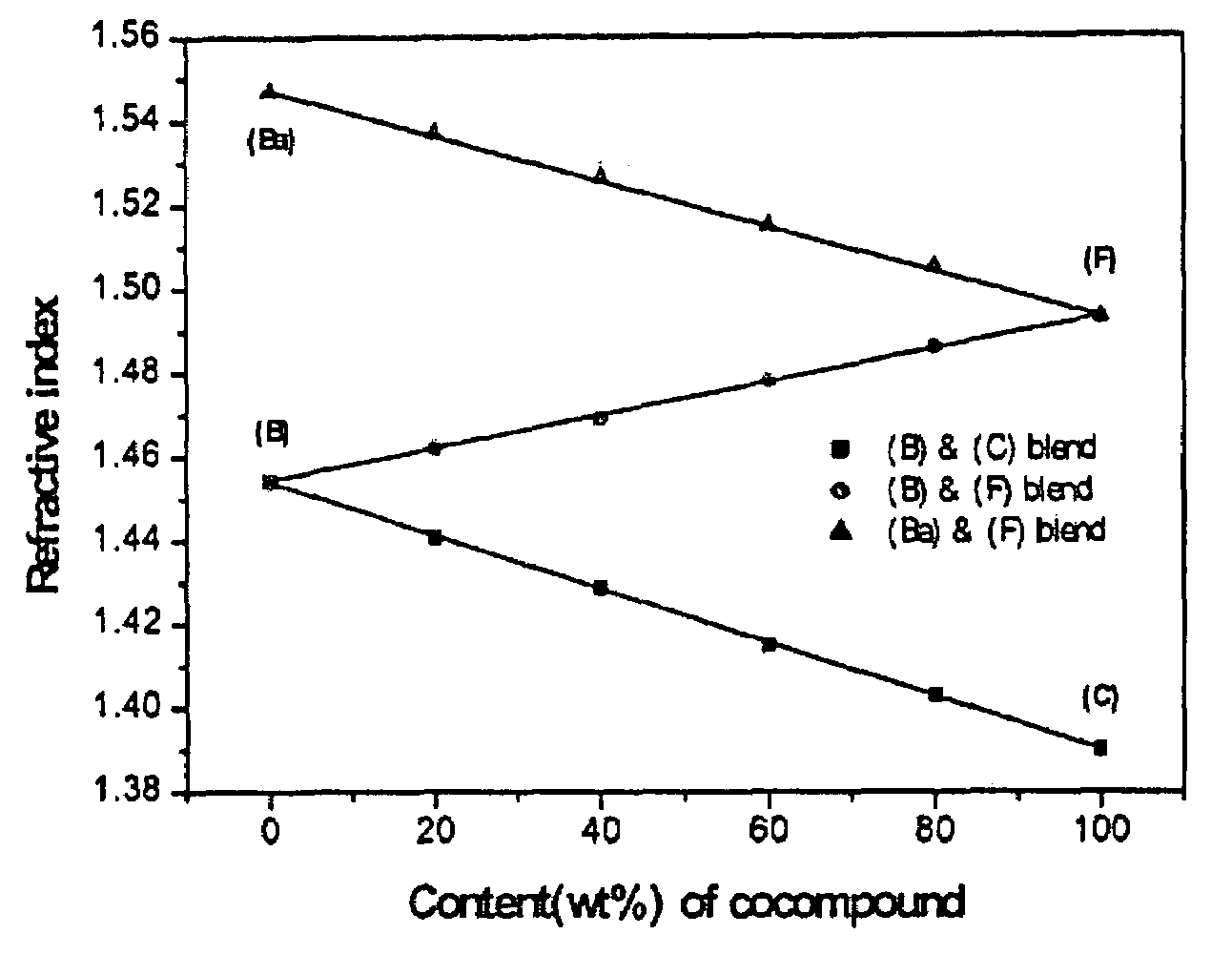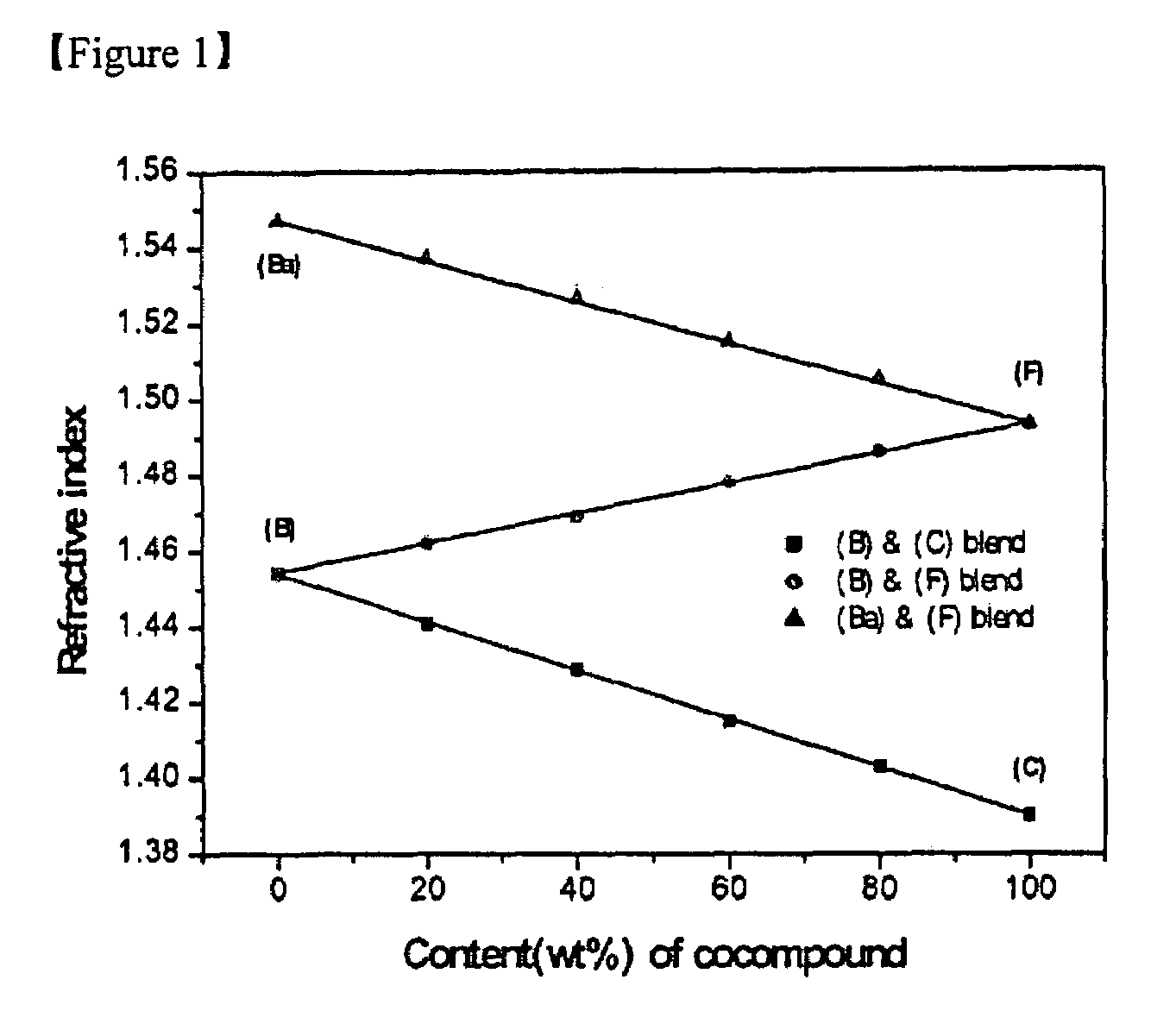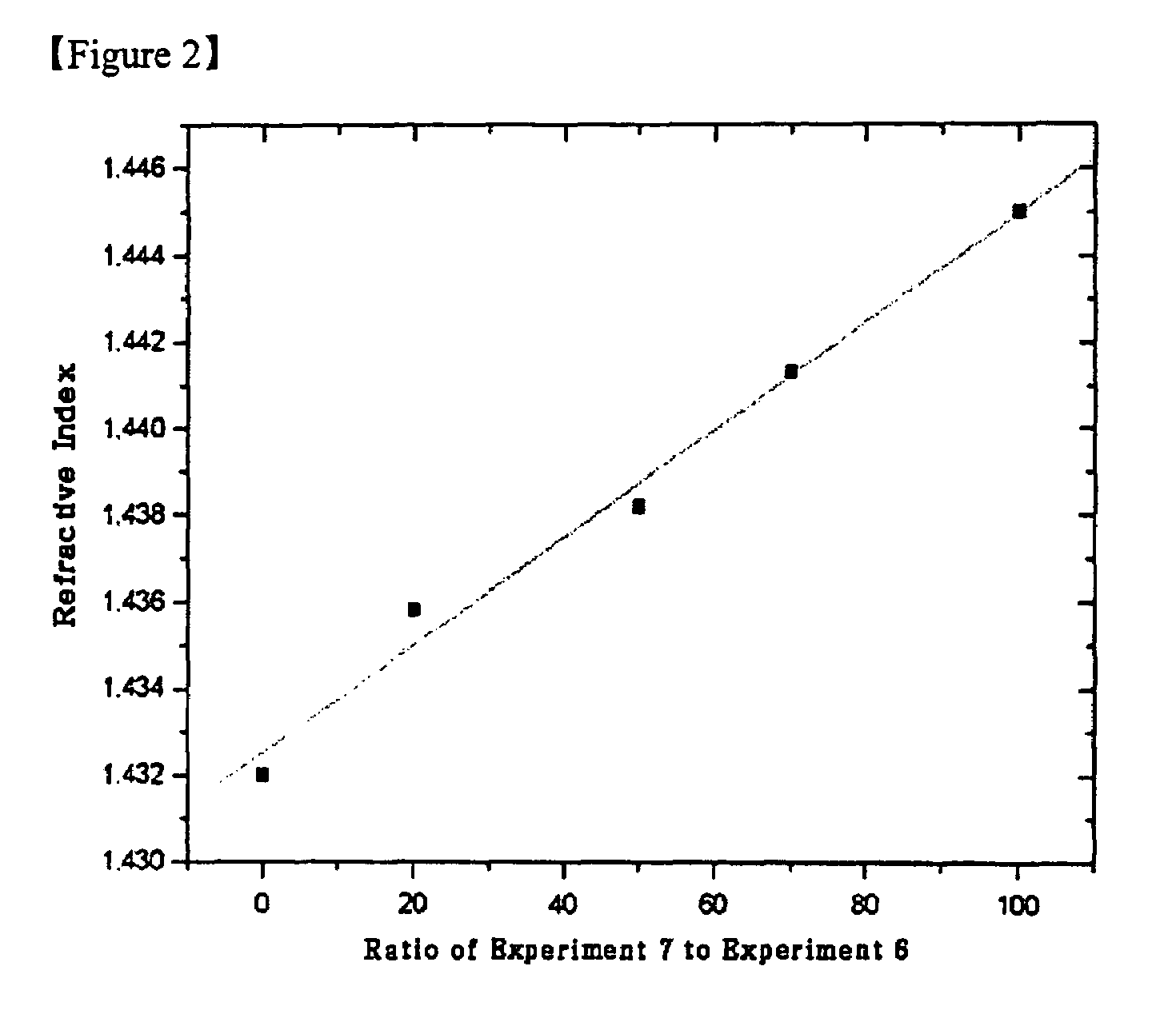Perfluorostyrene compound, and coating solution and optical waveguide device using the same
a technology of perfluorostyrene and coating solution, applied in the direction of optical elements, instruments, halogenated hydrocarbon preparations, etc., can solve the problems of high birefringence of 0.008 or more, relatively high optical loss of polyimide, and low optical loss. , the effect of low optical loss
- Summary
- Abstract
- Description
- Claims
- Application Information
AI Technical Summary
Benefits of technology
Problems solved by technology
Method used
Image
Examples
example 1
Preparation of Compound having Repeat Unit Represented by Formula A
[0059]3.0 g (16.12 mmol) of hexafluorobenzene and 5.17 g (19.70 mmol) of 2,2,3,3,4,4,5,5-octafluoro-1,6-hexanediol were placed into a 100 mL three-neck flask, to which 46 mL of a DMAc solvent was added to completely dissolve the reactants in the flask. 2.05 g of NaOH was further added into the flask, after which the resulting mixture was stirred at room temperature for 24 hours in a nitrogen atmosphere. Then, the reaction mixture was added with 1.39 g (7.16 mmol) of pentafluorostyrene and stirred for more 12 hours. Thusly obtained reaction mixture was extracted with deionized water and ether. The extracted ether layer was dried with magnesium sulfate, and ether was evaporated by a rotary evaporator. The produced liquid compound with very high viscosity was dried at room temperature using a vacuum pump to remove the residual solvent. 1H-NMR (Acetone d6) δ 4.90 (m), 5.75 (d of d), 6.04 (d of, d), 6.68 (d of d). Mn=2,56...
example 2
Preparation of Compound having Repeat Unit Represented by Formula B
[0060]The present example was performed in the same manner as in example 1, with the exception being that 4.87 g (19.70 mmol) of bromopentafluorobenzene was used, instead of hexafluorobenzene. 1H-NMR (Acetone d6). δ 4.92 (m), 5.73 (d of d), 6.04 (d of d), 6.67 (d of d). Mn=2,900 (NMR).
example 3
Preparation of Compound having Repeat Unit Represented by Formula C
[0061]2.26 g (12.15 mmol) of hexafluorobenzene and 6.09 g (14.85 mmol) of perfluorotetraethylene glycol were placed into a 100 mL three-neck flask, to which 47 mL of a DMAc solvent was added to completely dissolve the reactants in the flask. 1.54 g of NaOH was further added into the flask, after which the resulting mixture was stirred at room temperature for 24 hours in a nitrogen atmosphere. Then, the reaction mixture was added with 1.05 g (5.40 mmol) of pentafluorostyrene and stirred for 12 hours. Thusly obtained reaction mixture was extracted with deionized water and ether. The extracted ether layer was dried with magnesium sulfate, and ether was evaporated by a rotary evaporator. The produced liquid compound was dried at room temperature using a vacuum pump. 1H-NMR (CDCl3). δ 4.48 (m), 5.66 (d of d), 6.03 (d of d), 6.59 (d of d). Mn=3,150 (NMR).
PUM
| Property | Measurement | Unit |
|---|---|---|
| heat resistance | aaaaa | aaaaa |
| size | aaaaa | aaaaa |
| wt % | aaaaa | aaaaa |
Abstract
Description
Claims
Application Information
 Login to View More
Login to View More - R&D
- Intellectual Property
- Life Sciences
- Materials
- Tech Scout
- Unparalleled Data Quality
- Higher Quality Content
- 60% Fewer Hallucinations
Browse by: Latest US Patents, China's latest patents, Technical Efficacy Thesaurus, Application Domain, Technology Topic, Popular Technical Reports.
© 2025 PatSnap. All rights reserved.Legal|Privacy policy|Modern Slavery Act Transparency Statement|Sitemap|About US| Contact US: help@patsnap.com



